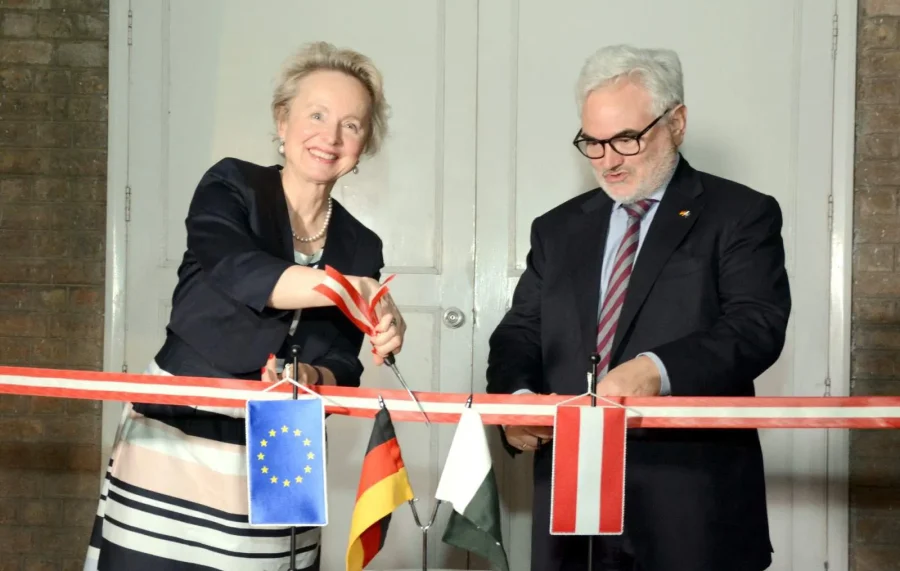Zubair Qureshi
After repeated failures year after year, loss of precious lives, injuries, setbacks etc, an Austria-German expedition back in 1953 finally reached the top of Nanga Parbat, the 9th highest peak (8,126 metres) in the world, also known as ‘killer-mountain.’
The news of the success of Hermann Buhl, the Austrian mountaineer who was the member of the German-Austria expedition brought some joy for Germany and it was perhaps the first morale-booster and cause of celebration for the Germans in the post-World War II depression.
These views were expressed by Ambassador of Germany Alfred Grannas at a ceremony co-hosted by the Austrian and the German embassies to celebrate the 70th anniversary of the first ascent of the Nanga Parbat. The celebrations–screening of a video film, exhibition of photographs and reception for the guests– were held at the residence of Austrian Ambassador Andrea Wicke. While giving an emotional speech, the German ambassador described how the Killer Mountain had become a nightmare for the German rather, the European mountaineers since all the initial attempts starting from the 1930s to scale it were proving fatal.
The ambassador said the Austrian mountaineer climbed the top on July 3, 1953 and this was and remains the only time an 8,000-metre summit was first reached by someone climbing alone.
The expedition was led by Karl Herrligkoffer who later went on to lead a long series of attempts to climb eight-thousanders in the Himalaya and Karakoram. Acknowledging the historic achievement, the German envoy said, “We recognize and pay tribute to the remarkable accomplishment of the German-Austrian expedition. The ascent indeed turned out to be a milestone in mountaineering history.
Austrian ambassador Andrea Wicke on the occasion paid rich tributes to the ‘first ascender’ of Nanga Parbat Hermann Buhl, the Austrian mountaineer ‘who dared to dream.’ However, his mountaineering career was not without sacrifice, said the ambassador, adding that he lost his life on subsequent expeditions.








